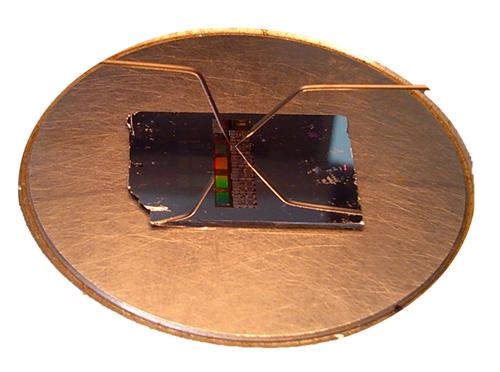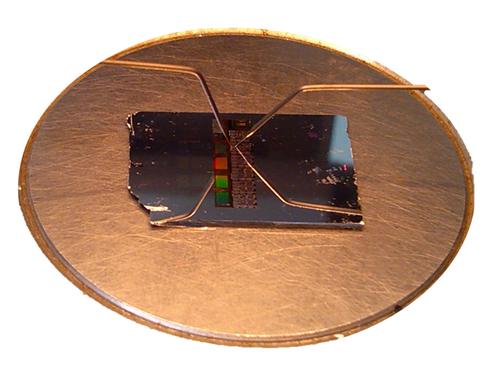New Metals Could Foster Phase-Change Memory Devices
September 27, 2013

Researchers in China have discovered a combination of metals that could have great potential for the next generation of memory-storage devices, which will use "phase-change" memory instead of Flash memory.
Researchers from the Shanghai Institute of Microsystem and Information Technology at the Chinese Academy of Sciences, the University of Chinese Academy of Sciences, and the National Laboratory of Solid State Nanostructures at Nanjing University have invented an electronic alloy of 50 aluminum atoms bound to 50 atoms of antimony to serve as the potential foundation for phase-change memory devices. The devices could provide more storage density and operate faster in a far smaller form factor than Flash memory.
The environmentally friendly alloy has been dubbed the "50-50 chip" by the researchers, who have published their findings in the journal Applied Physics Letters (registration required).

Phase-change memory is so named because it depends on materials that change from a disordered, amorphous structure to a crystalline structure when an electrical pulse is applied. The material has high electrical resistance in its amorphous state and a low resistance in its crystalline state. This change corresponds to the 1 and 0 states of binary data. A phase-change memory device can be less than 10 nanometers long; Flash memory devices generally can't be smaller than 20 nanometers.
Scientists have been working with a material containing germanium, antimony, and tellurium for phase-change memory devices. But Xilin Zhou, a researcher at the Institute of Microsystem and Information Technology at the Chinese Academy of Sciences, told PR Newswire that working with two metals is easier than working with three.
It's difficult to control the phase-change memory manufacturing process of ternary alloys such as the traditionally used germanium-antimony-tellurium material. Etching and polishing of the material with chalcogens can change the material's composition, due to the motion of the tellurium atoms.
Zhou told us in an email that he and his colleagues worked for a year with aluminum and antimony to come up with the material to create a prototype phase-change memory device.
First, the thermal, electrical, optical properties of the material were demonstrated and analyzed to address the issues that need to be solved in current memory technology. Second, the prototype memory devices were fabricated to examine the storage performances of the arrays with this material.
The research showed that the material is more thermally stable than the combination of germanium, antimony, and tellurium. It also has three distinct levels of resistance, which give it the ability to store three bits of data in a single memory cell, instead of just two.
Zhou said researchers are working with the material and the prototype device to explore its potential for phase-change memory. "More experiments on the film will be carried out to disclose the underlying rules of the interested 'phase-change' of this material, and the storage performance of the memory cells" will also be tested.
Related posts:
About the Author(s)
You May Also Like

.jpg?width=300&auto=webp&quality=80&disable=upscale)

